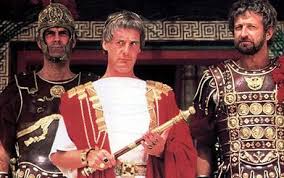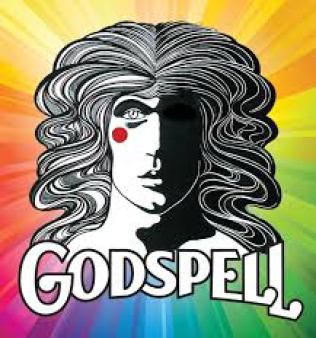This webpage is dedicated to my course, Jesus at the Movies. It is designed to be a resource for my students; however, I welcome anyone who finds its information and links useful. It contains links to online resources for each required film for the course as well as other relevant films including: if available, links to online streaming versions of the film, the film’s IMDB page, and online scholarly articles about the film (typically found in the online Journal of Religion & Film, but other places as well: Kinema). If you are a scholar who has written an article on one of these films, please message me with a link and I will add it after I read it. If students give their permission, I will include their film projects or a link to them as well (students have to make their own film in this class).
Please note: This page is still under construction: I plan to add discussion / reading / viewing questions for each film and reading.
The page also follows the traditional division between “Jesus” films and “Christ” films. Jesus films are about the life or part of the life of Jesus of Nazareth, whether set in ancient Roman Palestine or re-set in the modern world, while “Christ” films follow the basic character traits or take up elements of Jesus’ life, traditional Christology, and apply them to a modern character – something most common in sci-fi and fantasy, but also occasionally found in other genres. There is often much debate about whether a given film is a “Christ” film – whether it must be part of the auteur’s intention, whether it forms an essential element of the plot or is merely additive, or with a “Christ” subtext of a film is just as important as if not more significant than the explicit elements of the film.
Preliminary & General Materials
Adaptation
Paul Flesher and Robert Torry, “Filming Jesus: Between Authority and Heresy,” Religion & Film 8:1 (February 2004): article 14.
What is “targum” or “targumic method”? How do Flesher and Torry apply this ancient method to modern filmmaking? How does it work? Why must a filmmaker use this method? What are some of the drawbacks of the method?
Part 1A: Jesus Films
Required
King of Kings (1961; Dir. Nicholas Ray; Prod. Samuel Bronston); Featured image above from this film.

Jesus Christ Superstar (1973; Dir. Jewison)

Life of Brian (1979; Dir. Terry Jones)

A group of Bible scholars have written an entire book of collected essays on this, which, by the way, is often scholars’ most favorite “Jesus” movie: Taylor, Joan E. ed. Jesus and Brian: Exploring the Historical Jesus and His Times Via Monty Python’s Life of Brian. London: Bloomsbury T&T Clark, 2015.
Last Temptation of Christ (1988; Dir. Scorsese)
Passion of the Christ (2004; Dir. Gibson)
 Considering the heightened violence in this film, it is worth reading more generally about the apologetic uses of violence or editing of violence in biblical films by Hector Avalos, “Film and the Apologetics of Biblical Violence,” Religion & Film 13.1 (2009) Article 2.
Considering the heightened violence in this film, it is worth reading more generally about the apologetic uses of violence or editing of violence in biblical films by Hector Avalos, “Film and the Apologetics of Biblical Violence,” Religion & Film 13.1 (2009) Article 2.
Son of Man (2006; Dir. Dornford)

You can see the film in its entirety here.
You can read my analysis of animals and animality in this film here.
For entire book about this film, see Walsh, Richard, Jeffrey L. Staley, and Adele Reinhartz, eds. Son of Man: An African Jesus Film. Sheffield Phoenix Press, 2013.
While about many other films, including this one, the following article explores issues of race and colonialism in Jesus films: Rebekah Eklund, “Hot Jesus, Black Messiah, Suffering Son of God: How Jesus Films Shape Our Moral Imaginations,” Religion & Film 21.1 (2017) Article 33.
Additional
The King of Kings (1927; Dir. DeMille)
Full silent film available here.
Il Vangelo secondo Matteo / The Gospel according to [St.] Matthew (1964; Dir. Pasolini)
The Greatest Story Ever Told (1965; Dir. Stevens)
Godspell (1973; Dir. Greene)
Jesus of Nazareth (1977; Dir. Zeffifrelli)
Jesus of Montreal (1989; Dir. Arcand)
The Gospel of John (2003; Dir. Saville)
Available in its entirety here.
Part 1B: Period Films with Jesus as Minor Character (a.k.a., “Roman Conversion Films”)
None of these are required for this course, but will inform the course.
Quo Vadis (1951; Dir. LeRoy)
The Robe (1953; Dir. Koster)
Ben Hur (1959; Dir. Wyler); Remade (2016; Dir. Bekmambetov)
Barabbas (1961)
Life of Brian (above) technically fits this sub-genre.
Part 2: Christ Films
The Christ Typology: Some quick primers of the Christ Typology in contemporary films, usually in Sci-Fi, but also other genres.
Not really Kozlovic’s best work here, consisting mostly of a series of block quotations, but introduces the basic concept in four films: The Day the Earth Stood Still, Blade Runner, Terminator, and Terminator 2.
The Satan Typology: While perhaps a bit counterintuitive, I find it interesting to look at the nature of “Christ” films through Adam Porter’s more recently developed typology of “Satan” films, since in many of the films a “Satan” typology mirrors a “Christ” typology – though it doesn’t always and it is interesting to see what kinds of films it does not.
This article focuses on Terminator 2, the Matrix Trilogy, Superman Returns, and the Dark Knight, the final film having the least developed Christ typology.
Films analyzed include: Usual Suspects, Hannibal Lector series, Cape Fear, and Sherlock Holmes. Most of these films, interestingly, have characters fitting the “Satan” typology, but without a corresponding “Christ” typology.
Required
I Confess (1953; Dir. Hitchcock)
Though not directly about how I Confess is a Christ film, the following article does delve into some broad religious issues in the film: Catherine M. O’Brien, “‘Love, What Have You Done to Me?’ Eros and Agape in Alfred Hitchcock’s I Confess,” Religion & Film 18.1 (2014) Article 44.
Dogma (1999; Dir. Kevin Smith)
See my notes on Bethany as a Christ-figure here.
For other female Christ-figures, see David Fillingim, “When Jesus was a Girl: Polymythic Female Christ Figures in Whale Rider and Steel Magnolias,” Religion & Film 14:1 (April 2010), Article 8.
The Matrix (1999; Dir. Wachowski Siblings)

The bibliography on this film is enormous in the study of religion and philosophy. Here are a handful of articles.
Also see Porter, “Satanic but not Satan” above.
Gran Torino (2008; Dir. Eastwood)

How is this a Christ film? Just ask:
Additional
Cool Hand Luke (1967; Dir. Rosenberg)
Pale Rider (Dir. Eastwood) – for the violent redemptive Christ of Revelation.
Any Superman film, but especially: Superman: The Movie (1978); Superman II (1981); Superman Returns (2006).
Kozlovic focuses on the first two major films: Superman: The Movie (1978) and Superman II (1981), starring Christopher Reeve and directed by Richard Donner. A much better article than the one cited above.
See, again, Porter, “Satanic but not Satan” above.
E.T. (1982; Dir. Spielberg)

Dracula? (1992; Dir. Francis Ford Coppola)
I have to admit that this one seems a bit of a stretch, but Tina Pippin has some suggestive hints in her article, “Of Gods and Demons: Blood Sacrifice and Eternal Life in Dracula and the Apocalypse of John,” in Screening Scripture, 24-41, esp. 30. Sometimes the line between Christ typology and anti-Christ typology can be blurry.
Sling Blade (1996; Dir. Billy Bob Thornton)
A violent outsider Christ figure, combining and adapting elements of the Jesus of the gospel, the Jesus of Revelation, and the Western genre. See the article by Mark Roncace, “Paradoxical Protagonists: Sling Blade‘s Karl and Jesus Christ,” in Screening Scripture, 279-300.
See also the online article by Matthew McEver, “The Messianic Figure in Film: Christology Beyond the Biblical Epic,” Religion & Film 2.2 (October 1998) Article 3.
McEver starts off by discussing the shortcomings of “Jesus” films and how those are then overcome by more compelling “Christ” films. It is fairly dated now, since the last major Jesus movie he refers to is the Last Temptation of Christ, so before the second Jesus boom during the first decade of the 2000s. The “Christ” films he discusses are: Cool Hand Luke, One Flew Over the Cuckoo’s Nest, Dead Poet’s Society, and Sling Blade. While Cool Hand Luke‘s place in “Christ” filmography is pretty set, I am not really convinced that every time someone tries to buck the system and gets punished for it (lobotomized in One Flew Over the Cuckoo’s Nest; fired in Dead Poet’s Society), that person is necessarily a Christ figure. I think I need a little more, and Cool Hand Luke provides that little more. On the whole, however, this article, despite its intro and conclusion, is really about Slingblade, and worth reading for its more detailed analysis about that film, and makes a strong case that Karl in Slingblade is, in fact, a Christ figure.
Commonly Cited Secondary Readings
Aichele, George and Richard Walsh, eds. Screening Scripture: Intertextual Connections Between Scripture and Film. Harrisburg, PA: Trinity International Press, 2002.
Tatum, W. Barnes. Jesus at the Movies: A Guide to the Hundred Years and Beyond. Third Edition. Salem, Oregon: Polebridge Press, 2013.








2 thoughts on “Jesus at the Movies”